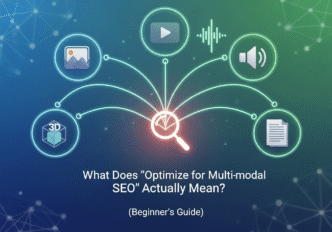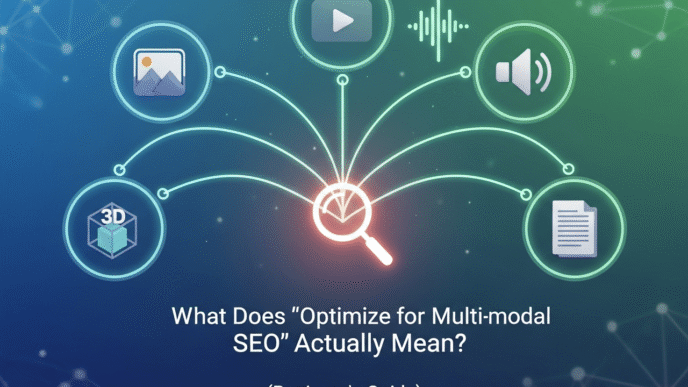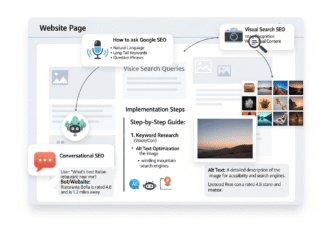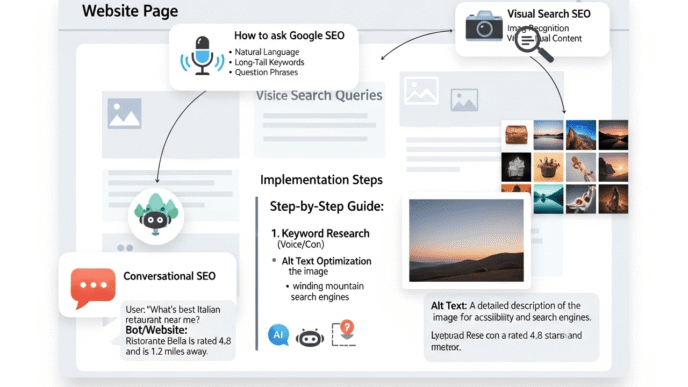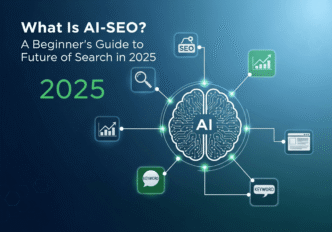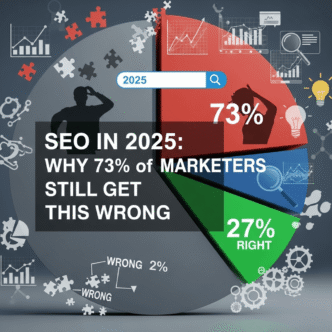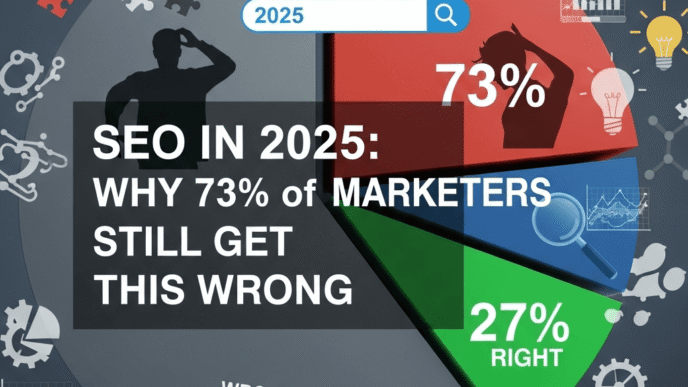Remember when websites took forever to load and buttons would jump around right as you tried to click them? Yeah, Google got tired of that too. That’s why they created Core Web Vitals—a set of metrics that measure how much your website annoys (or delights) actual humans.
Here’s the kicker: since 2021, these page experience signals directly impact your search rankings. Ignore them, and you’re basically telling Google, “Hey, I don’t really care if people hate using my site.”
Table of Contents
ToggleWhat Are Core Web Vitals and Why Do They Matter in 2025?
Core Web Vitals are three specific metrics that Google uses to measure user experience on your website. Think of them as your website’s report card for not being frustrating to use.
They measure how fast your content loads, how quickly users can interact with it, and how stable your layout is while loading. Simple, right?
But here’s why they’re crucial: Google confirmed that page experience signals are ranking factors. Sites with better Core Web Vitals scores consistently outrank competitors with similar content but worse user experience.
Pro Tip: According to Google’s own data, pages that meet Core Web Vitals thresholds see a 24% reduction in abandonment rates. That’s real money left on the table if you ignore these metrics.
The Three Core Web Vitals Metrics Explained (Without the Jargon)
Largest Contentful Paint (LCP) – The Speed Test
LCP measures how long it takes for the main content of your page to load. In human terms: how long until visitors can actually see what they came for?
Google wants this to happen in 2.5 seconds or less. Anything over 4 seconds and you’re in the danger zone.
Think of it like ordering coffee. Under 2.5 seconds is like a skilled barista—quick and satisfying. Over 4 seconds feels like waiting behind someone ordering a “half-caf, oat milk, extra foam, two pumps vanilla” monstrosity.
First Input Delay (FID) – The Responsiveness Check
FID measures the time between when someone first interacts with your page (clicks a button, taps a link) and when the browser actually responds. It’s basically measuring how frustrated your users get when they click something.
The goal? Under 100 milliseconds. That’s faster than a blink.
Cumulative Layout Shift (CLS) – The Stability Score
Ever tried to click a button, but suddenly an ad loads and you accidentally click that instead? That’s layout shift, and it’s infuriating.
CLS measures how much stuff moves around on your page while it’s loading. Google wants a score of 0.1 or less—basically, things should stay where you put them.
Comparison Table: Core Web Vitals Thresholds
| Metric | Good | Needs Improvement | Poor | What It Measures |
|---|---|---|---|---|
| LCP | ≤ 2.5s | 2.5s – 4s | > 4s | Loading performance |
| FID | ≤ 100ms | 100ms – 300ms | > 300ms | Interactivity |
| CLS | ≤ 0.1 | 0.1 – 0.25 | > 0.25 | Visual stability |
| INP (New) | ≤ 200ms | 200ms – 500ms | > 500ms | Overall responsiveness |
Note: INP (Interaction to Next Paint) replaced FID in March 2024 as a Core Web Vital.
How to Measure Your Core Web Vitals Score: The Essential Tools
You can’t fix what you don’t measure, right? Here are the best tools to check your Core Web Vitals:
Google PageSpeed Insights – The Official Report Card
PageSpeed Insights is Google’s own tool. It shows both lab data (controlled testing) and field data (real user experiences).
Paste your URL, wait about 30 seconds, and boom—you get your scores plus specific recommendations.
Google Search Console – The Big Picture View
Your Search Console shows Core Web Vitals data for your entire site. It groups URLs with similar issues, making it easier to spot patterns.
The best part? It shows actual data from Chrome users visiting your site—not simulated tests.
Chrome DevTools – The Deep Dive
For the technically inclined, Chrome DevTools lets you measure Core Web Vitals in real-time. Open DevTools (F12), go to the Performance tab, and record while loading your page.
How to Improve Core Web Vitals Score: The Optimization Checklist
Fixing Largest Contentful Paint (LCP)
Your LCP is probably slow because of images, server response times, or render-blocking resources. Here’s how to fix each:
- Use modern formats like WebP (30% smaller than JPEG)
- Implement lazy loading for below-the-fold images
- Serve responsive images with srcset
- Compress images without losing quality
2. Improve Server Response Time
- Upgrade to better hosting (shared hosting is often the culprit)
- Use a CDN to serve content from servers closer to users
- Enable browser caching
- Reduce server processing time with efficient code
3. Eliminate Render-Blocking Resources
- Inline critical CSS
- Defer non-critical JavaScript
- Remove unused CSS and JavaScript
- Minify all code files
Pro Tip: The biggest LCP culprit is usually hero images or videos. Preload these critical resources using <link rel="preload"> to cut load times by up to 50%.
Fixing First Input Delay (FID) and Interaction to Next Paint (INP)
JavaScript is usually the villain here. When your browser is busy executing JavaScript, it can’t respond to user interactions.
1. Break Up Long JavaScript Tasks
- Split code into smaller, async chunks
- Use web workers for heavy computations
- Remove unnecessary third-party scripts
2. Optimize JavaScript Execution
- Minimize main thread work
- Reduce JavaScript execution time
- Use code splitting and tree shaking
- Defer non-critical scripts
3. Implement Progressive Enhancement
- Ensure basic functionality works without JavaScript
- Add enhanced features progressively
- Use passive event listeners where possible
Fixing Cumulative Layout Shift (CLS)
Layout shift happens when elements load without reserved space. Here’s the fix:
1. Set Size Attributes for Media
<img src="image.jpg" width="800" height="400" alt="Description">
Always include width and height attributes—it reserves space before the image loads.
2. Reserve Space for Ads and Embeds
- Use min-height CSS for ad containers
- Predefine sizes for dynamic content
- Avoid inserting content above existing content
3. Optimize Web Fonts
- Use font-display: optional or swap
- Preload critical fonts
- Use fallback fonts that match your web fonts’ dimensions
Core Web Vitals Optimization Checklist for WordPress Sites
WordPress powers 43% of the web, so let’s get specific about WordPress optimization:
Essential WordPress Optimizations
- [ ] Use a Performance-Focused Theme: Avoid bloated themes like Avada or Divi. Go with GeneratePress, Astra, or Kadence.
- [ ] Install a Caching Plugin: WP Rocket, W3 Total Cache, or LiteSpeed Cache
- [ ] Optimize Your Database: Use WP-Optimize to clean up overhead
- [ ] Lazy Load Images: Most caching plugins include this, or use Lazy Load by WP Rocket
- [ ] Minimize Plugins: Each plugin adds code. Audit and remove unnecessary ones
- [ ] Use a CDN: Cloudflare’s free plan works great for most sites
- [ ] Optimize Images Automatically: Use ShortPixel or Imagify
- [ ] Minify CSS/JavaScript: Autoptimize or your caching plugin can handle this
- [ ] Disable Unnecessary Features: Turn off emojis, embeds, and other features you don’t use
Pro Tip: Before installing any performance plugin, test your Core Web Vitals. Then test again after installation. Some “performance” plugins actually make things worse by adding their own overhead.
Real-World Case Study: How an E-commerce Site Achieved Perfect Core Web Vitals Scores
Let me share a real example from a client’s furniture e-commerce site (name withheld for privacy).
The Problem:
- LCP: 6.2 seconds (Poor)
- FID: 280ms (Needs Improvement)
- CLS: 0.31 (Poor)
- Conversion rate: 0.8%
What We Did:
Week 1-2: Image Optimization
- Converted all images to WebP format
- Implemented lazy loading
- Used responsive images with proper srcset
- Result: LCP dropped to 3.8 seconds
Week 3: Server and Hosting
- Migrated from shared hosting to managed WordPress hosting
- Implemented Cloudflare CDN
- Enabled full-page caching
- Result: LCP improved to 2.3 seconds
Week 4: JavaScript Optimization
- Removed 6 unnecessary plugins
- Deferred all non-critical JavaScript
- Minimized third-party scripts
- Result: FID improved to 85ms
Week 5: Layout Stability
- Added dimensions to all images
- Reserved space for dynamic content
- Fixed font loading issues
- Result: CLS score of 0.08
Final Results After 6 Weeks:
- LCP: 2.3 seconds (Good) ✅
- FID: 85ms (Good) ✅
- CLS: 0.08 (Good) ✅
- Conversion rate: 1.4% (75% increase!)
The improved user experience didn’t just help rankings—it directly impacted revenue.
The Connection Between Core Web Vitals and SEO Rankings
Google has been crystal clear: Core Web Vitals are confirmed ranking signals. But here’s what they don’t tell you loudly enough: they’re not the most important ranking factors.
Content is still king. But when you and your competitor have similar content quality, Core Web Vitals can be the tiebreaker.
According to a study by Searchmetrics, pages ranking in the top 10 have significantly better Core Web Vitals scores than those on page 2. The correlation is undeniable.
Common Core Web Vitals Mistakes to Avoid
Mistake #1: Optimizing for Lab Data Only
Lab data (from tools) doesn’t always match field data (from real users). Always check both in PageSpeed Insights.
Mistake #2: Ignoring Mobile Performance
Google uses mobile-first indexing. Your desktop scores don’t matter if mobile is terrible.
Mistake #3: Over-Optimizing at the Expense of Functionality
Don’t remove useful features just to improve scores. Find the balance between performance and user value.
Mistake #4: Not Testing After Updates
WordPress updates, plugin updates, or theme changes can tank your Core Web Vitals. Always test after making changes.
Mistake #5: Focusing on One Metric
All three Core Web Vitals matter. Don’t obsess over LCP while ignoring CLS.
Advanced Core Web Vitals Optimization Techniques
Ready to go beyond the basics? Here are advanced strategies:
Resource Hints and Preloading
<link rel="dns-prefetch" href="//fonts.googleapis.com">
<link rel="preconnect" href="//fonts.googleapis.com">
<link rel="preload" as="style" href="critical.css">
These hints tell the browser to start connecting to external domains early, saving precious milliseconds.
Critical CSS Inlining
Instead of loading all CSS externally, inline the CSS needed for above-the-fold content directly in your HTML. Tools like Critical can automate this.
Service Workers for Caching
Implement a service worker to cache static assets. This dramatically improves repeat visit performance.
Adaptive Loading
Serve different experiences based on network speed and device capabilities. Slow connection? Skip the video background.
The Future of Page Experience Signals: What’s Coming Next
Google isn’t done with page experience. Here’s what’s on the horizon:
INP (Interaction to Next Paint) officially replaced FID in March 2024. It measures responsiveness throughout the entire page lifecycle, not just the first interaction.
Privacy Sandbox initiatives will impact how we measure and optimize user experience while respecting privacy.
AI-powered optimizations are coming. Google’s already using machine learning to predict which resources to prioritize.
Your Core Web Vitals Action Plan for 2025
Here’s your step-by-step plan:
Measure Current Performance (Week 1)
- Run tests on PageSpeed Insights
- Check Search Console for site-wide issues
- Document baseline metrics
Quick Wins (Week 2)
- Optimize images
- Enable caching
- Remove obvious bloat
Infrastructure Improvements (Week 3-4)
- Upgrade hosting if needed
- Implement CDN
- Optimize database
Advanced Optimizations (Week 5-6)
- Fix JavaScript issues
- Implement lazy loading
- Optimize fonts
Monitor and Iterate (Ongoing)
- Set up monitoring
- Test after every change
- Keep optimizing
Internal Resources to Master Technical SEO
Understanding Core Web Vitals is just part of technical SEO. Check out these essential guides:
- Learn the fundamentals with our guide on how search engines crawl and index websites
- Discover all ranking factors in our comprehensive breakdown of search engine ranking signals
- Master the basics with our technical SEO best practices
- Understand the bigger picture of how search engines work
- Optimize for user intent with our guide on understanding search queries
Tools and Resources for Core Web Vitals Monitoring
Free Tools:
- Google PageSpeed Insights
- GTmetrix
- WebPageTest
- Chrome User Experience Report (CrUX)
Paid Tools:
- Calibre (continuous monitoring)
- SpeedCurve (performance budgets)
- Pingdom (uptime + performance)
WordPress-Specific Tools:
- WP Rocket (all-in-one optimization)
- Perfmatters (lightweight optimization)
- Asset CleanUp (remove unused code)
Final Thoughts: Why Core Web Vitals Are Non-Negotiable in 2025
Here’s the brutal truth: users are less patient than ever. Google knows this, and they’re rewarding sites that respect user time and experience.
Core Web Vitals aren’t just about pleasing Google—they’re about not frustrating your visitors. Every second of load time costs you conversions. Every layout shift costs you trust.
The good news? Most of your competitors are ignoring this. While they’re chasing backlinks and keywords, you can win by simply having a website that doesn’t suck to use.
Remember: perfect scores aren’t the goal. Good scores are. Focus on real improvements that users will notice, not chasing perfect metrics.
Start with the biggest issues first. Fix your images, upgrade your hosting if needed, and remove the junk. The fancy optimizations can come later.
Your users (and your rankings) will thank you.
Frequently Asked Questions About Core Web Vitals
Do Core Web Vitals really affect SEO rankings?
Yes, Google confirmed Core Web Vitals are ranking signals as of June 2021. However, they’re not the strongest signals—content relevance and quality still matter more. Think of them as tiebreakers when content quality is similar.
What’s the difference between lab data and field data?
Lab data comes from controlled tests (like PageSpeed Insights running a test). Field data comes from real Chrome users visiting your site over the past 28 days. Field data is what Google uses for rankings, but lab data helps you debug issues.
How often does Google update Core Web Vitals scores?
Field data in tools like PageSpeed Insights updates daily but shows a 28-day rolling average. Search Console data updates daily but may have a 1-2 day delay. Your actual ranking impact updates continuously.
Can a slow website still rank well?
Absolutely. If your content is significantly better than competitors, you can still rank well with poor Core Web Vitals. But you’re leaving money on the table—better performance means better user experience and higher conversions.
Which Core Web Vital is most important?
Google weighs them equally for rankings, but from a user perspective, LCP (loading speed) often has the biggest impact on bounce rate and user satisfaction. Fix your worst-performing metric first.
Do Core Web Vitals apply to all pages or just the homepage?
They apply to every page individually. Each page is evaluated on its own merits. Your homepage might pass while your product pages fail—or vice versa.
How long does it take to see ranking improvements after fixing Core Web Vitals?
Typically 2-4 weeks after Google recrawls and reindexes your pages. Field data takes 28 days to fully update. Be patient—the improvements are worth the wait.
Should I use AMP to improve Core Web Vitals?
Not necessarily. AMP can help but isn’t required. Many sites achieve excellent Core Web Vitals without AMP. Focus on the optimizations in this guide first—they’re usually enough.
Remember: Core Web Vitals are about creating a better web for everyone. Fix them not just for Google, but for your users who deserve a fast, stable, and responsive experience.
Core Web Vitals 2025
LCP
Largest Contentful PaintMeasures loading performance. LCP marks the point when the main content has likely loaded - the faster, the better user experience.
INP
Interaction to Next PaintMeasures interactivity. INP assesses responsiveness to user interactions throughout the page lifecycle (replaced FID in 2024).
CLS
Cumulative Layout ShiftMeasures visual stability. CLS quantifies how much page content shifts during the loading phase - less movement means better UX.
Core Web Vitals Score Simulator
6-Week Optimization Roadmap
Measure & Audit
- Run PageSpeed Insights tests
- Check Search Console data
- Document baseline metrics
- Identify biggest issues
Image Optimization
- Convert images to WebP
- Implement lazy loading
- Add width/height attributes
- Optimize above-fold images
Infrastructure
- Upgrade hosting if needed
- Implement CDN
- Enable caching
- Optimize database
JavaScript & CSS
- Remove unused code
- Defer non-critical scripts
- Inline critical CSS
- Minify all assets
Fine-tuning
- Fix remaining CLS issues
- Optimize fonts
- Test and monitor
- Document improvements
Core Web Vitals Impact on User Metrics
Abandonment
Engagement
Conversions
Rankings





